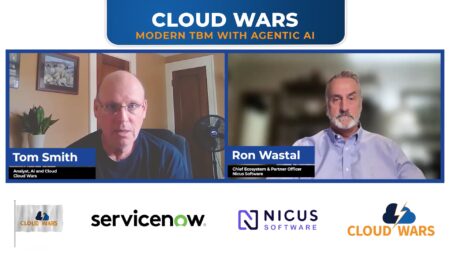Written by Bill Doerrfeld
The tech industry is always eager to offer up new buzzwords. Recently, you may have heard the terms “no-code” and “low-code” used interchangeably to describe a revolution in visual-driven application development styles. But, what is the difference between no-code and low-code? How are they similar?
No-code and low-code platforms aim to make technology more accessible with less hardcoding and more drag-and-drop development. Both types help citizen developers construct powerful backend workflows with little to no code. They are primarily different in that they offer different user experiences to appeal to various skill levels. But, there’s more to unpack…
Below, we’ll examine findings from the Rise of the No-Code Economy report. I also met with no-code expert Chris Byers, CEO, Formstack, to better understand the nuances of no-code and how it’s differentiated from low-code.
A Lack of Understanding Around No-Code
82% of people are unfamiliar with the term “no-code,” found the Rise of the No-Code Economy survey. Yet, Gartner predicts that 65% of application development will be done using low-code and no-code tools by 2024. Clearly, a wide gap exists between current and expected no-code knowledge.
Reasons for this lack of understanding are multifold. First, no-code is a very new phenomenon. According to the study, 66% of respondents only began using no-code tools within the last year, and 41% reported they first started using them over the previous six months.
Some murkiness also lies in the fact that both low-code and no-code tools adopt visual programming models to achieve a similar end goal: enabling rapid transformation. “71% say they choose to use no-code tools due to either speed and/or ease,” says the report.
So, what exactly sets the two apart?
Defining No-Code
Whereas low-code platforms often expose windows to insert more custom logic, no-code is all about simplicity. “On the no-code side, user experience has to be dead simple,” says Chris Byers. No-code appeals to a high percentage of creative individuals who could whiteboard out a UI process but not code the backend.
For a tool to indeed be “no-code,” anyone, regardless of skill level, should be able to log in, drag and drop functions, and use buttons and widgets to pull answers together. According to Byers, great no-code tools require an “investment in user experience, and thinking out every single moment.”
Although you may not be aware of the term “no-code,” you likely already use no-code tools. The origins of no-code can be traced back to the original Microsoft Excel. Released in 1985, Excel enabled everyday users to construct complex functions and logic without code. Since then, CMSs like WordPress have continued to abstract away code using WYSIWYG editors.
In a similar vein, today’s no-code platforms focus on lowering the bar of entry to building not only static websites but event-driven applications and workflows. For example, Byers described how an HR representative could use a no-code platform to create a tool to automate employee sick leave requests. “That process is not worth buying a core system for,” says Byers. “Instead, no-code is about taking those lower priority processes and getting them automated.”
Defining Low-Code
Whereas no-code is open for more skillsets, low-code platforms target more advanced users. Instead of wholly replacing programmers, low-code sits alongside developers to automate tasks. Low-code similarly uses visual workflow models but usually requires some coding to really benefit.
Low-code often offers more customization and advanced capabilities to streamline existing developer workflows, such as reusing code libraries or initiating machine learning processes. Compared to no-code, low-code provides deeper integration capabilities, often enabling connections with a database framework or interconnecting Software-a-a-Service APIs and DevOps deployment tools. Some low-code tools even provide AI-powered development experiences.
SD Times reported one of the first usages of the term “low-code” in 2014 to depict the resurgence of visual-driven development. Since then, many no-code and low-code platforms have emerged onto the scene. Here is a spectrum of popular tools:
 Diagram courtesy of Formstack, from The Rise of the No-Code Economy. Used with permission.
Diagram courtesy of Formstack, from The Rise of the No-Code Economy. Used with permission.
Why No-Code? Why Now?
Neither low-code nor no-code are new concepts. Filemaker, for example, is about 23 years old. However, recent movements have amplified the importance of such tools. For one, organizations are faced with an ongoing skills shortage. 82% of organizations can’t attract the necessary software developers they require, found an Appian survey.
In general, organizations tend to have a favorable opinion of no-code tools. The Rise of the No-Code Economy survey found 47% believe their organization has a need for no-code tools. This is due to pressing needs to deliver and a lack of developer talent.
Furthermore, workplace demographics are shifting, especially as Generation Z enters the digital workforce. 18–24-year-olds are more than twice as likely to have used a no-code tool, found the report. TechCrunch even went as far to coin Generation Z the “no-code” generation.
“Some are already talking about a second digital revolution, describes Sascha Willutzki. ”A paradigm shift in the way we interact with technology that allows anyone with an idea to create powerful business applications, beautiful websites, and seamless integrations.”
The Future of No-Code
The report found 71% of respondents working in software expect an increase in no-code tool usage over the next year. Others echo this sentiment with significant growth forecasts for the no-code sector.
In 2018, the no-code and low-code market hit a significant valuation of $6 billion. Now in 2021, others predict the no-code and low-code market size will reach $86.92 billion by 2027, with a CAGR of 22.7% during the period.
Yet, as it stands today, “most of the world doesn’t know that no-code exists,” says Byers. The report found only 20% of people use no-code tools. Looking to the future, Byers envisions more education around no-code principles and the eventual proliferation of no-code use throughout enterprises.
“The biggest thing we can do is to teach frameworks for solving problems,” says Byers. He predicts no-code will soon work its way into high-school and college class curriculums, empowering a new class of specialists to address workflow-style problems.
He also believes further proofs will demonstrate the power of no-code, encouraging use across more organizations. “[More examples] will prove to people that full processes and whole departments can run on these applications.”
Following No-Code and Low-Code
When it comes to low-code and no-code, a mix of industry jargon and new technologies obfuscate meaning. Put simply, low-code requires some coding, and no-code usually doesn’t. Adopted by IT departments, low-code platforms require a decent understanding of programming. No-code appeals more to everyday users.
With pressing needs to innovate, no-code could empower non-technical problem solvers to automate tasks that IT isn’t actively covering. Both from an investment and tooling perspective, no-code is undoubtedly a space to keep an eye on into the future.
For additional information, I recommend reading the Formstack report. Viewable here, it collects an impressive amount of research and expert opinions into a dense interactive report to better understand no-code, its history, adoption, and use cases.
Related DAC Content
Back @ IT: Round-Up of Low-Code/No-Code Solutions
Back @ IT: The Low-Code/ No-Code Evolution
Introduction to AI Builder for the Power Platform
Low Code, No Code and the Citizen Developer
More By Bill Doerrfeld:
How Low-Code will Transform Manufacturing
The Role of AI Within Low-Code Development






